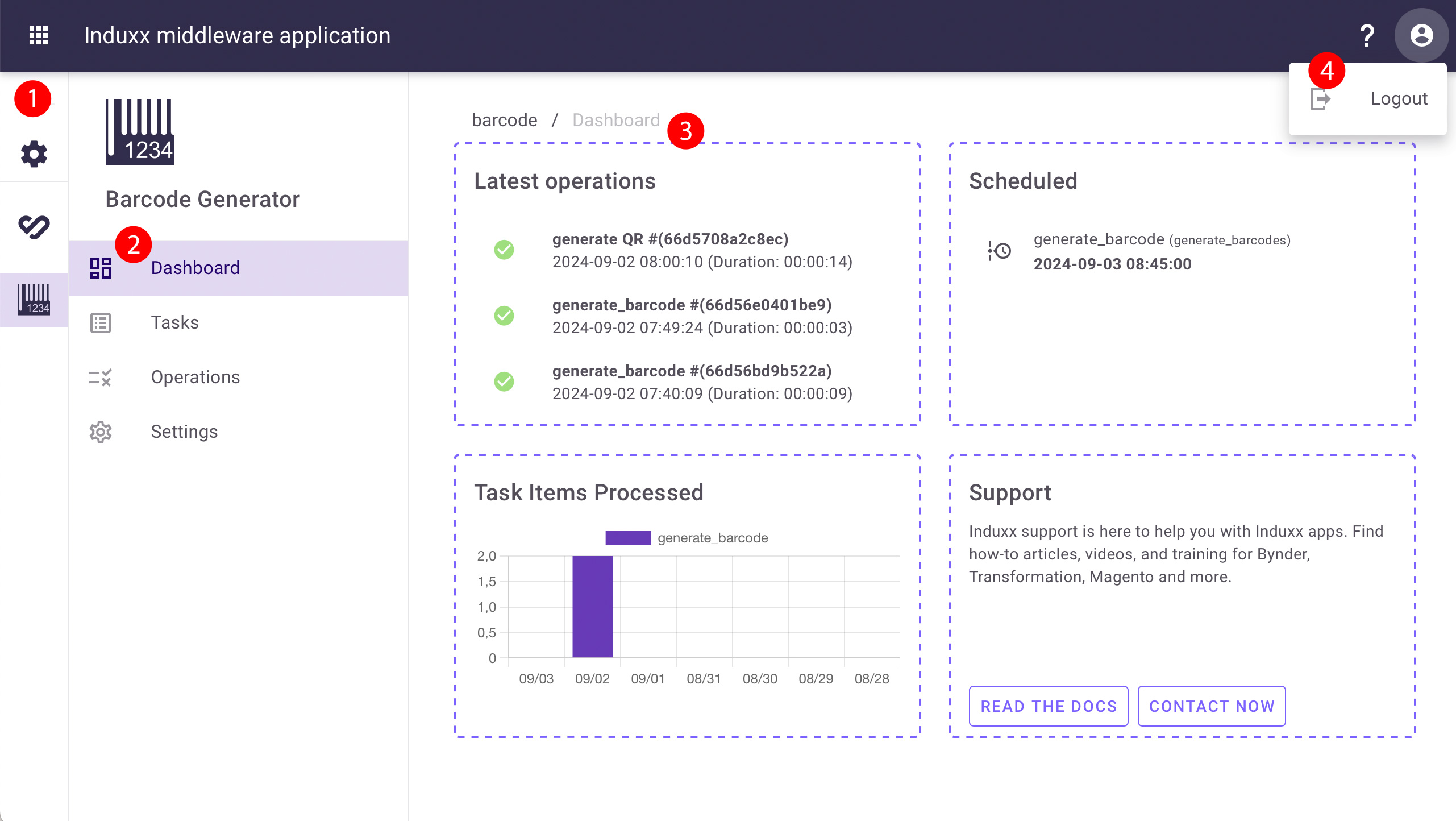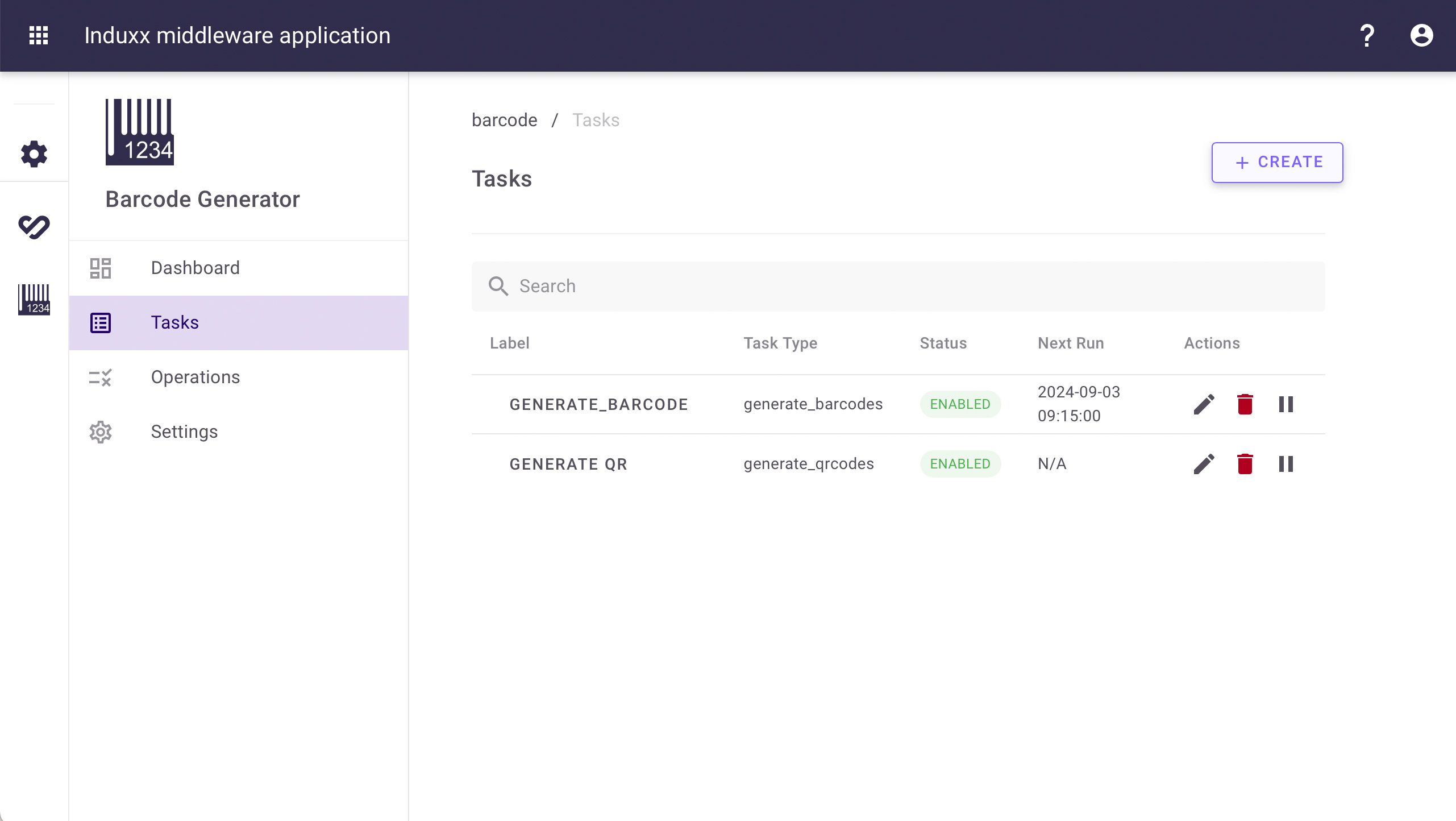Navigating the middleware application

- App switcher: This navigation bar shows the general settings and all the active middleware applications
- App menu: The main navigation of your app. Tasks, operations and settings tailored for the app populate this menu.
- Dashboard: This is the homescreen of your app, consistent of several widgets: an overview of the latest operations ad scheduled tasks, processed items over time and a shortcut to our documentation and support.
- The navigation in the top-right corner contains 2 items: logging out of the app and starting a guided tour that walks you through the app by clicking the question mark.
Tasks and operations
The cornerstones of an Induxx middleware application consists of tasks and operations. Where a task consists of the necessary configuration and information, an operation is an execution of that task. This flow is applied to the Barcode generator as well.
 Think of tasks as the blueprint or template of an operation.
A task contains all the necessary information to carry out an operation, as well as the possibility to set a certain schedule to automatically run operations.
Think of tasks as the blueprint or template of an operation.
A task contains all the necessary information to carry out an operation, as well as the possibility to set a certain schedule to automatically run operations.
When you navigate to the tasks section of your app, you will see an overview of the created tasks and their status. On this screen you can create, update and delete a task.
 The Operations section provides an overview and logs of all operations (i.e., executions of tasks) that have been executed.
The status chips up top gives you the possibility to filter out operations that ended with a certain status.
The Operations section provides an overview and logs of all operations (i.e., executions of tasks) that have been executed.
The status chips up top gives you the possibility to filter out operations that ended with a certain status.
Filters
In most cases, your app will use and/or alter a certain set of product information of your PIM environment. On the task level, you will be able to filter your dataset based on a date range of when products are updated (e.g. all updated products since the last time an operation was successfull, all changes of the last week, …).
But what if you only want to update a products of a certain category, or only when a product attribute has a certain value? That’s where filters come in. You can create a filter to define your product dataset, and link them to your task. Once filters are created, they can be linked to multiple tasks across the active apps in your account.

To create a filter, navigate to the general settings (on top of the app switcher), and click the ‘filters’ section.